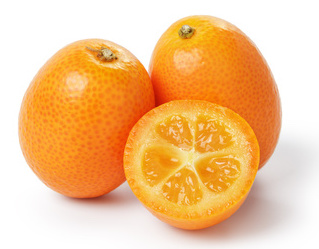
Health Benefits:
Anti inflammatory
Combats fatigue
May reduce nausea
Prevents sinusitis
Provides energy
Nutrition:
Serving size: 5 fruits; Calories: 71; Fat: .9g; Cholesterol: 0mg; Sodium: 10mg; Carbs: 15g; Fiber: 5.4g; Sugars: 6g; Protein: 4g; Potassium: 5%DV; Vitamin A: 5%DV; Vitamin C: 73%DV; Calcium: 6%DV; Iron: 4%DV
Did You Know?
- Although they look and taste like other citrus fruits, unlike other citrus you can eat the whole fruit, skin and all!
- Kumquats taste best if they are gently rolled or squeezed between the fingers before being eaten.
- A mature kumquat tree bears several hundred olive-sized brilliant orange color fruits in winter.
Ways to Eat:
- Raw (just like grapes)
- Made into jam or marmalade
Farming Trivia:
- Kumquats are grown mainly in California, Florida and Texas; to a lesser extent in Puerto Rico, Guatemala, Surinam, Colombia and Brazil.
- Although they can survive during the winter the best time to plant them is during the Spring
Note: Always consult a physician for any specific health questions and concerns. Some of this information may be subject to change should there be any new findings from Federal Health Administration (FHA), Food & Drug Administration (FDA), American Medical Association (AMA), American Cancer Society (ACS), and / or other leading food, nutrition and medical advisors.

